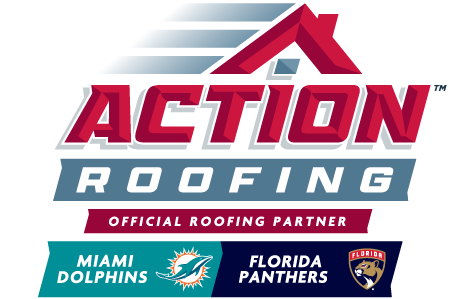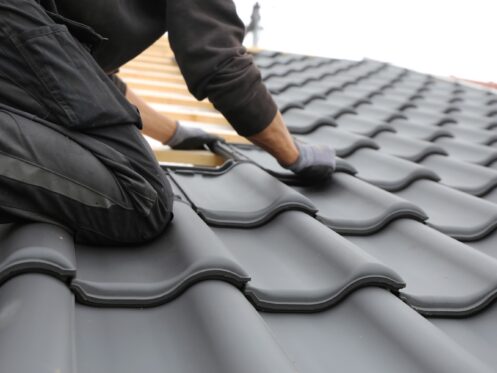Having a coastal home in Fort Lauderdale, FL can be a beautiful experience. However, this is an area that is prone to hurricanes. It’s imperative that homeowners take proactive steps to protect their homes as well as themselves. Choosing a hurricane-resistant roofing option is a wise investment, and there are many roofing types and materials to consider.
The Challenges of a Coastal Climate
Hurricanes bring strong winds and precipitation to coastal areas, which can impact your roof if it’s not capable of withstanding such great forces. Wind can create a lifting force on your roof, resulting in it coming up from the main structure of your home. Many coastal residences opt for stronger roofing materials as well as an anchoring system. This area can also result in saltwater damaging the structure of your roof over time. When choosing roofing material, take corrosion resistance into account as well.
The Benefits of Hurricane-Resistant Roofing
Investing in a hurricane-resistant roof can increase the value of your home. Potential buyers are swayed by a residence that appears to be resilient against inclement weather. This investment could also lower your insurance premium, saving you money over time. If your roof holds up well during hurricane season and beyond, this can lead to fewer repair needs and lengthen the lifespan of your roof. These are also ways to save money.
Choosing Hurricane-Resistant Roofing
With different options available, it can be overwhelming to select material for your new roof. Our team can help you determine what’s best based on your budget and household needs.
Metal Roofing
The great thing about metal roofing is that it’s so durable, it can last a lifetime. Most metal roofs have a life expectancy of approximately 50 years or more when installed correctly and routine maintenance is performed. Metal roofing materials can reflect sunlight, which can help reduce the cost of cooling your home. There are many colors and styles to choose from.
Metal roofs are usually made from either steel or aluminum. Aluminum is ideal in coastal regions due to its natural ability to resist corrosion. Metal roofs can be engineered in a way that makes them resilient to strong winds. Standing seam panels can eliminate the need for exposed fasteners, cutting down on the risk of wind creating an uplift.
Concrete or Clay Tiles
Both concrete and clay are very strong and heavy materials. They are extremely beneficial for coastal climates where hurricanes are an issue because they aren’t easily lifted by strong winds. They’re also very dense, which means they won’t experience damage as easily when hit with debris. Their lifespan is between 50 and 100 years, so this may be a once-in-a-lifetime investment. The only downside to concrete or clay roofing tiles is their weight. You’ll need to work closely with our experienced team to ensure that your roof can support this material.
Wind-Rated Asphalt Shingles
Traditional asphalt shingles have the potential to blow off your roof during a hurricane or storm. However, there are high-wind rated versions that offer much better performance. They feature better adhesives and additional reinforcement to reduce wind infiltration. Even though this shingle option is designed with inclement weather in mind, there is still the potential for shingles to come off with strong enough winds. This is a less effective option than a metal roof or concrete tiles.
Synthetic Roofing Materials
Synthetic roofing materials are designed to look like natural options, but they provide much better resilience. Examples include composite shingles and synthetic slate. Not only do synthetic roofing materials hold up well to strong winds, but they can also tolerate UV radiation, hail and saltwater. Installation is very flexible, which is ideal if you have a roof with odd angles or slopes. If you’re concerned with reducing your carbon footprint, synthetic roofing is often made from recycled materials.
Wood Shake Roofing
Wood shakes offer a traditional and coastal look. They can be treated for water and fire resistance and provide excellent insulation. This isn’t the most hurricane-resistant roofing option you can select, but it’s an affordable consideration. Routine maintenance and repairs can help protect the longevity of your wood shake roof.
Other Roofing Installation Considerations
In addition to roofing material, the overall design of this project matters. It’s imperative that professionals from our knowledgeable team install your roof for optimal longevity.
If your roof is pitched very low, this can provide more protection against hurricane-force winds and precipitation. We also ensure that your roof is streamlined, preventing any weak points where wind can build up pressure and cause destruction.
We can install any roof using reinforcement systems like hurricane-resistant clips and straps, mechanical fasteners and glue-down methods. We recommend installation using the process of overlapping materials to create a tighter roof structure. Upgrading your underlayment and using sealants around edges can also make a big difference.
We still need to ensure that your roof can experience proper ventilation. In our area, it’s common for heat to build up inside your home. This heat will rise and should be able to escape through your attic ventilation system. This will keep your home cool in an efficient manner but also protect your roof and home.
Protecting the Longevity of Your Roof
There are steps you can take to protect the integrity and longevity of your roof from inclement weather as well as typical wear and tear. We recommend scheduling an annual inspection of your roof. Our team can spot issues early and perform repairs, preventing major problems and limiting susceptibility to storm damage. We will look for missing or damaged shingles, corrosion, water damage, flashing issues and more. Depending on the type of roof you have, we may be able to assist with cleaning or sealing your roof to protect material integrity.
If damage occurs, we recommend that you reach out to our team as soon as possible. We can provide emergency and temporary storm damage repairs until a more permanent solution can take place. Even if you don’t see damage after a storm, it’s a good idea to have our team inspect your roof firsthand for any problems that aren’t visible from ground level. This will protect your home from water damage, pest infestations and mold growth.
Our team adheres to very strict standards during the installation of your hurricane-resistant roof. We follow local regulations and codes to ensure safety. Inspections occur at different points of the installation process to ensure that your roof is safe and strong.
What roofing materials are best for hurricane-prone areas?
Metal roofs boast durability and longevity in coastal regions where hurricanes are a risk. If you don’t like the look of metal roofs or can’t afford one, consider upgraded storm-resistant shingles.
How can I tell if my roof is hurricane-ready?
Schedule an inspection with our team. We can alert you to any issues that exist with your roof, including damage and less-than-durable materials.
Action Roofing can provide support when you need to select a new hurricane-resistant roof for your Fort Lauderdale home. We can provide expert roof replacement and installation services, routine maintenance and emergency storm damage repairs. Reach out to our team at Action Roofing for more information or to schedule an appointment in Fort Lauderdale.




